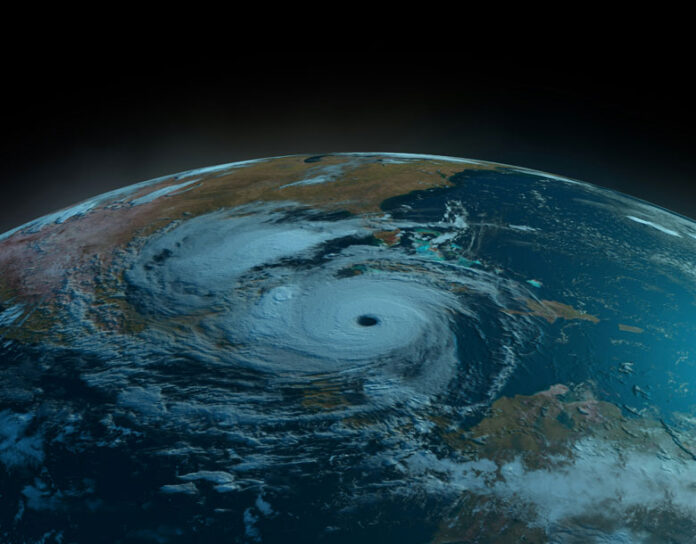The average annual cost of home insurance will rise 8% this year — or $261 — to a national average of $3,520 as insurance companies seek to recoup massive losses from severe weather events of recent years, according to a new analysis.
Weather-related disasters, including hurricanes in the South, wildfires in the West and hailstorms in the Midwest, have been increasing in intensity and frequency, causing larger losses and higher claim payouts, according to Insurify, a virtual licensed insurance agent. For example, in Iowa insurers pay out $122 in claims on home damage for every $100 they make in premiums, Insurify’s analysis found.
To maintain their profit margin, insurers usually pass increased losses on to consumers by hiking premiums. The annual cost of home insurance increased 8% nationally in 2024, which Insurify noted is almost three times the rate of inflation (2.9%). Insurify said home insurance premium increases will vary by state in 2025.
The company predicts that home insurance will rise a whopping 21% in California, citing the Palisades and Eaton fires that devastated Los Angeles County in January, as well as regulatory changes.
But Florida will continue to be the most expensive state for homeowners insurance. The average annual cost in the Sunshine State will increase to $15,460 by the end of the year, Insurify projects. And Colorado, which continues to suffer increased hail damage, will become one of the four most expensive states for home insurance by the end of the year.
Adding to the increase in insurance costs are tariffs on steel, aluminum, lumber, and other homebuilding materials, which drive up the cost of rebuilding, according to Insurify.
“The cost to rebuild or repair a home is a primary consideration in calculating insurance rates,” said Daniel Lucas, a carrier relations manager at Insurify. “If the cost of construction materials rises, those costs would be factored into policyholder premiums.”
For its analysis, Insurify’s data team analyzed costs in each state and projected rate increases based on historical pricing and insurer loss data. The team’s key findings and projections include:
- Home insurance in California will increase 21% by year end to an average of $2,930 annually. In addition to to effect of wildfires, the state’s new insurance model permits insurers to weigh future climate risks when setting premiums.
- Home insurance rates will also rise 15% or more in Louisiana, Iowa, Hawaii, and Minnesota in 2025.
- Louisiana is projected to experience the largest home insurance premium increase in 2025, 27% — nearly $3,000 — to $13,937. The state had a 38% increase in 2024.
- Florida homeowners, who in 2024 paid the highest average premiums of $14,140, will see an increase of 9% in 2025 to $15,460. Hialeah, Florida, is projected to have an average cost of ($26,693, the highest of any U.S. city.
- Insurify warns that tariffs remain a wild card. If they are sustained, they could raise home insurance prices above Insurify’s current projections by increasing the cost of imported construction materials by as much as $4 billion.
The States With the Highest Insurance Premiums
The following is a list of the 10 states projected to have the largest insurance premiums in 2025, showing the projected premium, projected increase and percentage increase:
- Florida $15,460, $1,320, 9%
- Louisiana $13,937, $2,974, 27%
- Oklahoma $8,369, $607, 8%
- Colorado, $6,630, $646, 11%
- Texas $6,522, $516, 9%
- Alabama $5,831, $386, 7%
- Nebraska $5,203, $478, 10%
- Mississippi $5,198, $389, 8%
- Arkansas $5,077, $588, 13%
- Kansas $4,782, $226, 5%
1. Florida
Florida will continue to be the most expensive state for home insurance in 2025, Insurify projects, citing frequent hurricanes that have resulted in large payouts and heavy losses for insurers. Florida residents submitted almost 458,000 hurricane claims in 2024. The two most destructive disasters of 2024 in the U.S. were Hurricanes Helene and Milton, which wreaked more than $100 billion in total damages. Climate disasters have cost Florida about $237 billion since 2020, the National Centers for Environmental Information reports.
Because of their large losses, 16 insurers have withdrawn from the state and 16 other insurers have become insolvent since 2017. Of Florida’s 67 counties 34 are rated by FEMA at “very high” or “relatively high” risk of hurricane damage. That risk makes the market untenable for many insurers and so less affordable for homeowners.
After some insurers left the state, Florida legislators and regulators worked to make the state easier for insurers to operate in and maintain their profitability while encouraging some companies to return.
“Early indications are that the plan is working, as we saw 17 companies file for rate decreases in 2024,” Lucas said. “Since the reforms were put in place, 10 new companies have been approved to write homeowners policies in Florida.”
2. Louisiana
In Louisiana, hurricanes, and other natural disasters have caused more than $115 billion in damages since 2020. Homeowners will be charged almost four times the national average for home insurance coverage in 2025, Insurify projects. Despite this, Louisiana remains the least profitable state for insurers because of a large loss ratio — the gap between claims paid out and premiums charged. For every $100 insurers in Louisiana collect in premiums, they pay $159 in claims, Insurify’s analysis of five-year loss ratios found. But loss ratios exclude overhead costs, so insurers are actually losing more than the loss ratio indicates.
Twelve insurers in Louisiana became insolvent after hurricanes in 2020 and 2021, reducing competition as the remaining companies increased premiums. Four of 10 most expensive American cities for home insurance are in Louisiana. In New Orleans, homeowners pay almost six times the national average.
3. Oklahoma
Tornadoes, hail and high winds are high risks for Oklahoma, according to FEMA. About 80% of claims in the state are for storm damage. Farmers Insurance, Oklahoma’s second-largest home insurance company, said in 2024 that it was not renewing about 1,300 policies due to wildfire risk. The state saw a 41% increase in tornadoes from 2022 to 2023. The state last year moved to give homeowners grants to strengthen structures against tornadoes, windstorms and hail. Some insurers in areas at high-risk from hail are changing their coverage of roofs, paying actual cash value rather than replacement cost. This method factors in depreciation, reducing payouts.
“While product changes may lead to lower coverage, this is a way for carriers to keep coverage affordable and available,” Lucas said.
4. Colorado
Colorado’s average home insurance cost will exceed Texas’ by the end of the year, according to Insurify’s projections. Insurers in Colorado suffered a net loss in 2023, paying out more in claims than they took in through premiums. Severe weather is the main driver of the state’s elevated risk level. Over 300,000 properties are at risk of wildfire, and nearly $200 billion in assets are exposed. Over the past three years, there has been a 65% increase in hailstorms, which can cause expensive damage to roofing.
“The affordability problems we have in Colorado are driven by hail,” Colorado Insurance Commissioner Michael Conway told the Colorado Sun. “Anywhere from 50% to 60% of the insurance premiums that people pay in Colorado is, on average, paying for hail.”
5. Texas
Texas home insurance rates are continuing to increases, mainly because of losses from major natural disasters. There have been 68 disasters costing at least $1 billion in Texas — the most of any state — resulting on about $108 billion in damages. Along with California and Florida, FEMA rates Texas “very high” for anticipated natural hazard losses. Texas is ranked among the 10 most at-risk states for hurricanes, coastal flooding, drought, hail, lightning, tornadoes, wildfires, ice storms, strong winds, heat waves and cold waves.
Last year, four home insurers stopped writing policies in Texas, which affected about 11,000 homeowners.
For more information, see Insurify’s full report here.







